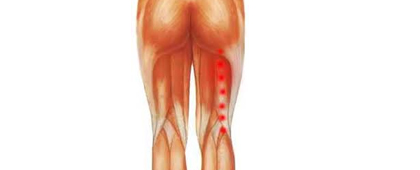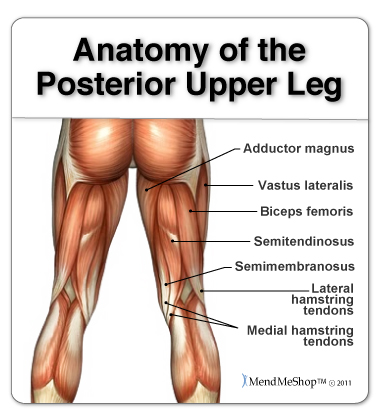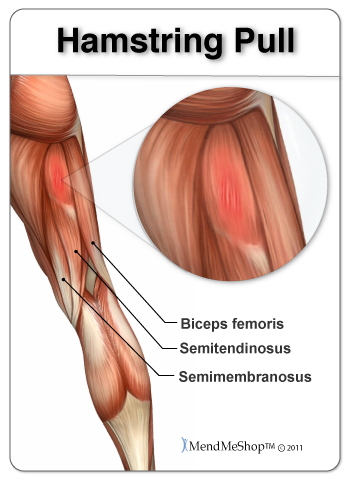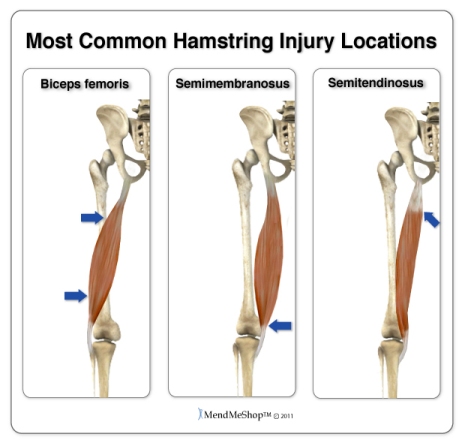
Pulled Hamstring Muscles
Anatomy of the Upper Thigh

The upper leg muscles provide your knees with mobility (extension, flexion and rotation) and strength. The hamstring muscles are located on the back of your thigh. They work closely with your quadriceps muscles (front of your thigh), your gluteal muscles, and your calf muscles to ensure proper movement of your leg and hip.
Your hamstring muscles control movement of your body, hip and knee, help turn your leg in and out, and are involved with power activities that include a lot of propulsion, thrust and control (such as jumping, running, and walking). They are involved with eccentric movements, which increase the length of the muscle while it is under tension – instead of starting an action, the muscles act as a brake to stop an action. You can feel this when walking or running downhill, landing from jumps or performing squats, and when trying to stop quickly after sprinting.
The hamstrings (posterior thigh muscles) are made up of 3 long muscles that start at the bottom of your pelvis extending down the back of your thigh and along either side of your knee, to your shin bones. The lateral hamstring is the biceps femoris (made up of 2 parts – a short head and long head) and the medial hamstrings are the semitendinosus (joins the sartorius muscle and gracilis muscle at the pes anserinus on the tibia) and the semimembranosus (the largest hamstring muscle). The tendons (tough fibers that connect muscle to bone) for these muscles begin at your ischial tuberosity (the bony bump under each buttock, known as your “sit bone”) and attach on the outer edges of your shinbone (your tibia and fibula) just below the back of your knee. They help to stabilize your knee. Your hamstrings also have a lot of soft connective tissues and are innervated by your sciatic nerve.
Pulled or Strained Hamstring

A hamstring strain or hamstring sprain is tissue damage that causes pain and inflammation. These injuries can be caused by an acute injury in which the tissue is stretched or twisted beyond the limits or by a chronic injury that occurs with excessive use over time. The type of tissue that is damaged determines if it is a sprained hamstring or a strain.
Sprains are injuries to ligaments, the thick fibrous tissue that connects one bone to another. Strains occur in muscles and tendons, the tissue that connects muscles to bones. A hamstring pull is astrain in one of the 3 hamstring muscles or the adjoining tendon; biceps femoris, semitendinosus, or semimembranosus.
Hamstrings are very long muscles that cross 2 joints (your hip and knee) and are called upon to work for many daily activities. Strains in the hamstrings (also called a pulled hamstring, thigh pull, or leg pull) are one of the most common injuries in vigorous sports activities and among runners; 33% of lower body injuries for those between 16-25 years of age are hamstring injuries.
Hamstring muscles in the back of the thigh, the quadriceps muscles in the front, and the adductor muscles on the inside of the hip and upper leg are responsible for the trunk and legs’ multi-directional movements.
